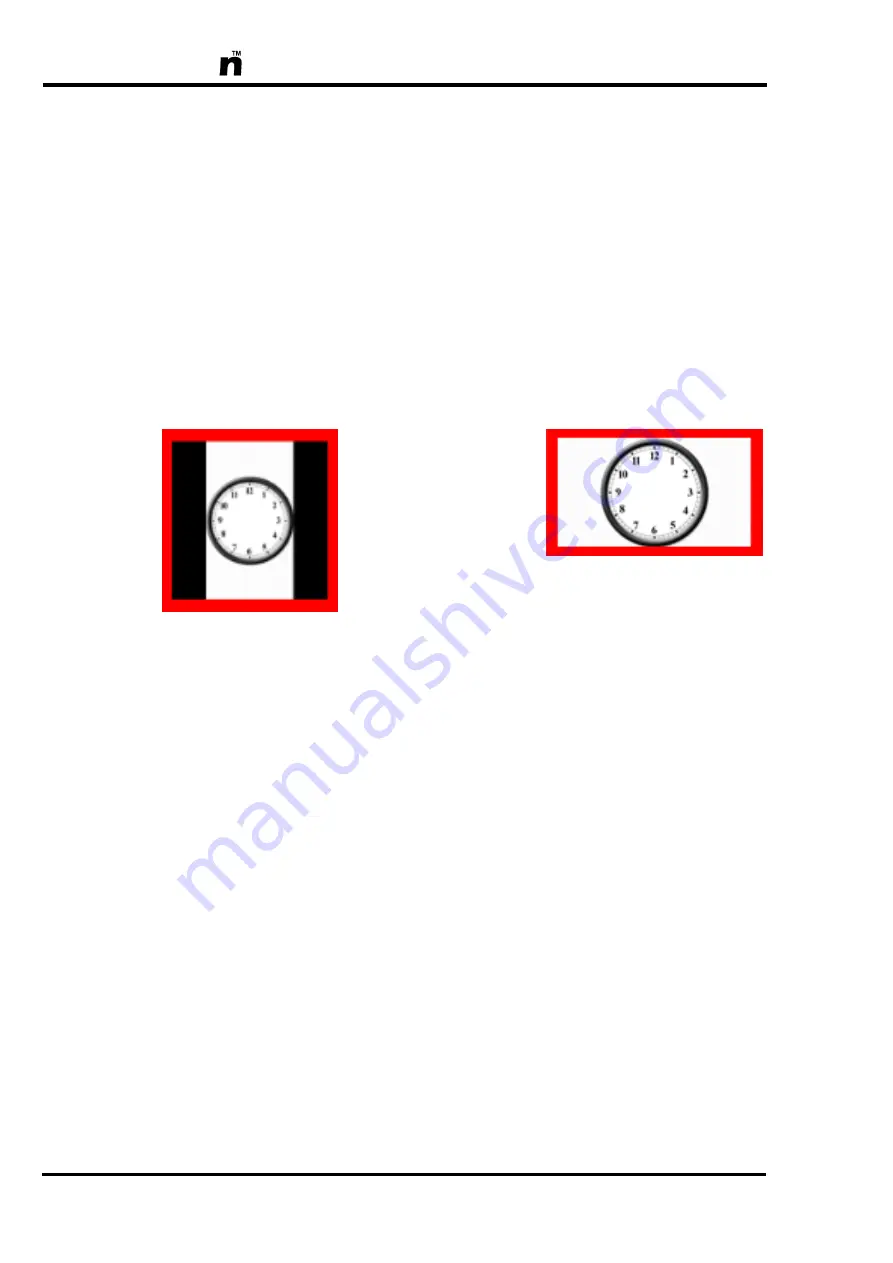
MultiScree
222
Editing Mode
On a portrait system, there are a couple of visual differences in the Editing Mode
user interface when compared to a landscape system.
[a]
The Editing Mode user interface is displayed only in the upper half of the
screen, with the lower half remaining blank (as depicted on the previous
page).
[b]
Portrait screen thumbnails appear within a larger square area, with black
padding along the left and right sides to fill out the spare space within the
thumbnail area.
Landscape Thumbnail
Portrait Thumbnail
[c]
Most text on a portrait system appears slightly taller & narrower than on a
landscape system, to allow for more information to be displayed across the
relatively narrower width of the portrait screen.
[d]
In the Screen Editor there is no
4:3/16:9
aspect ratio stretching button. This
button is also absent on the Set Defaults screen. (Refer to
of the Operator’s Manual for further info.)
Graphic Dimensions
When creating your graphics for use on a portrait MultiScreen unit, a graphic
will display at its best if it is exactly 768 pixels wide and 1366 pixels high. It is
recommended that you use your paint program to change the image to these di-
mensions before loading it into the MultiScreen unit. However, the system can
still show non-standard sized images, and if necessary, the “Fit Screen” option in
the Screen Editor can be used to automatically resize non-standard sized images
to best fit the TV screen. (Also refer to
Summary of Contents for In House TV Communication System
Page 1: ...OPERATOR S MANUAL www multiscreen biz info multiscreen biz...
Page 8: ...MultiScree 8...
Page 234: ...MultiScree 234...



























